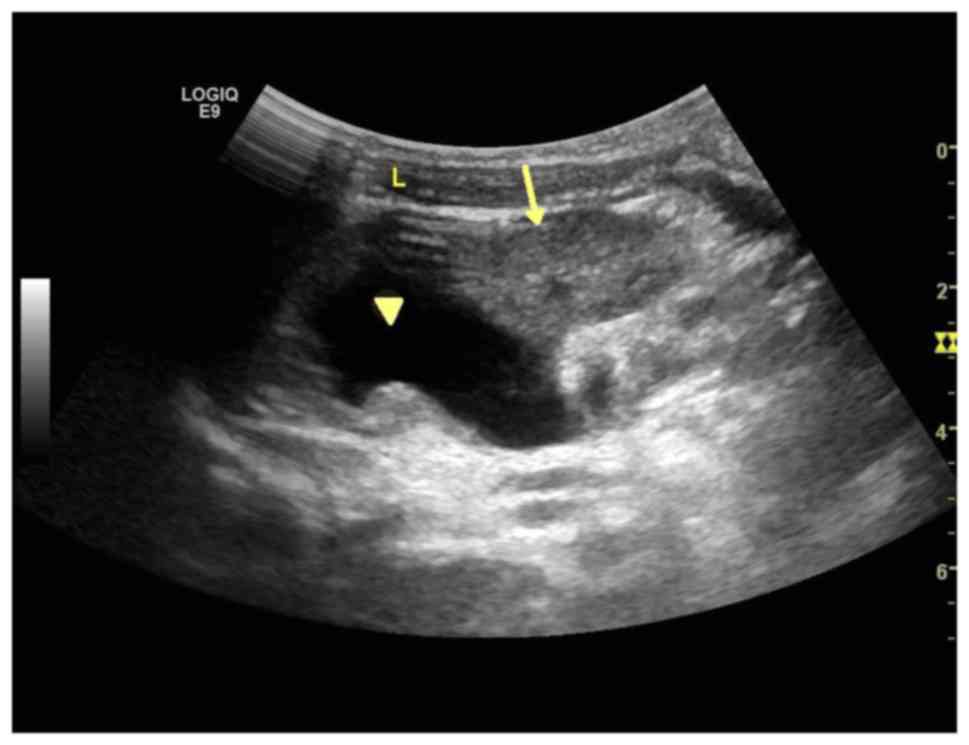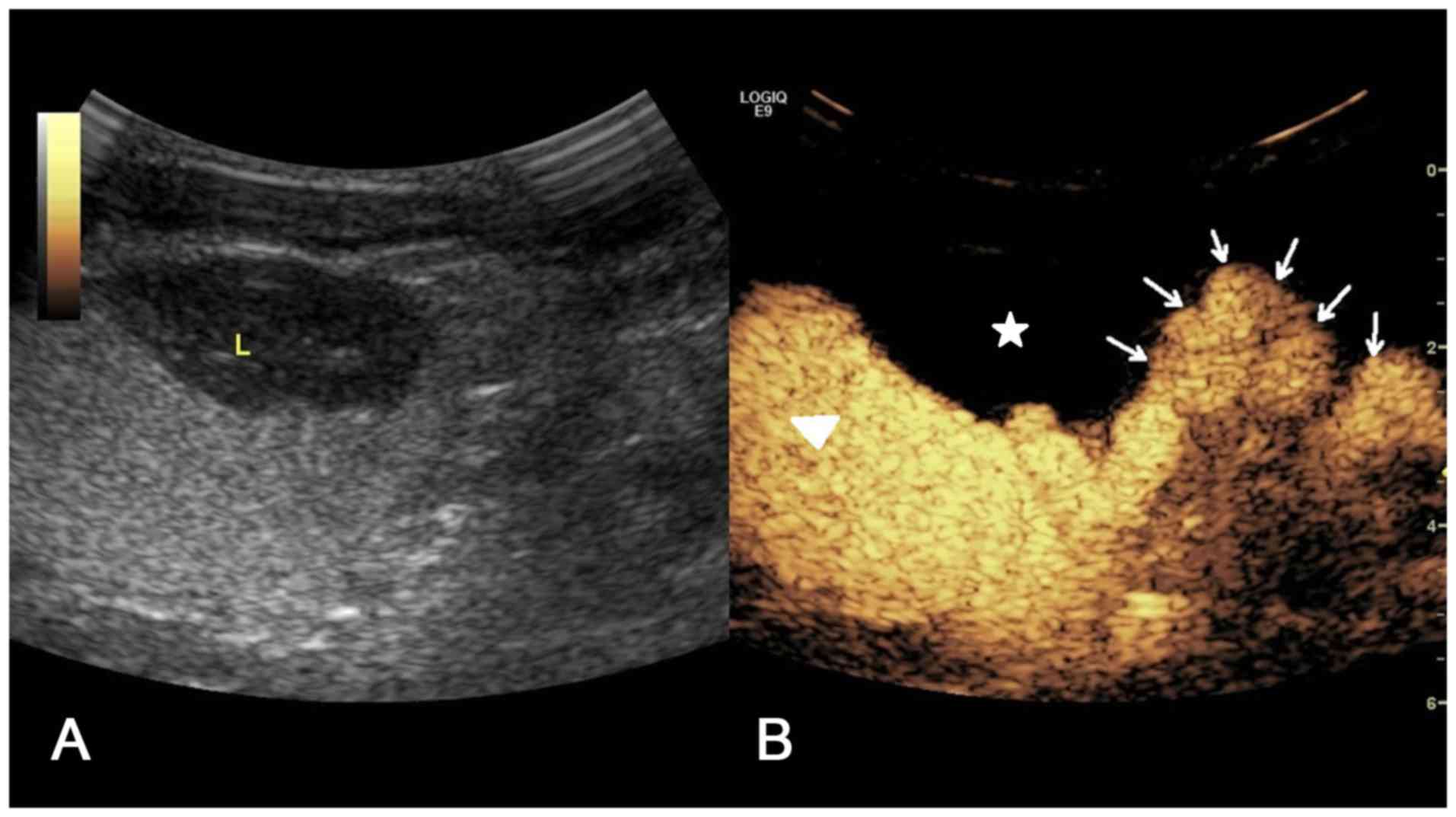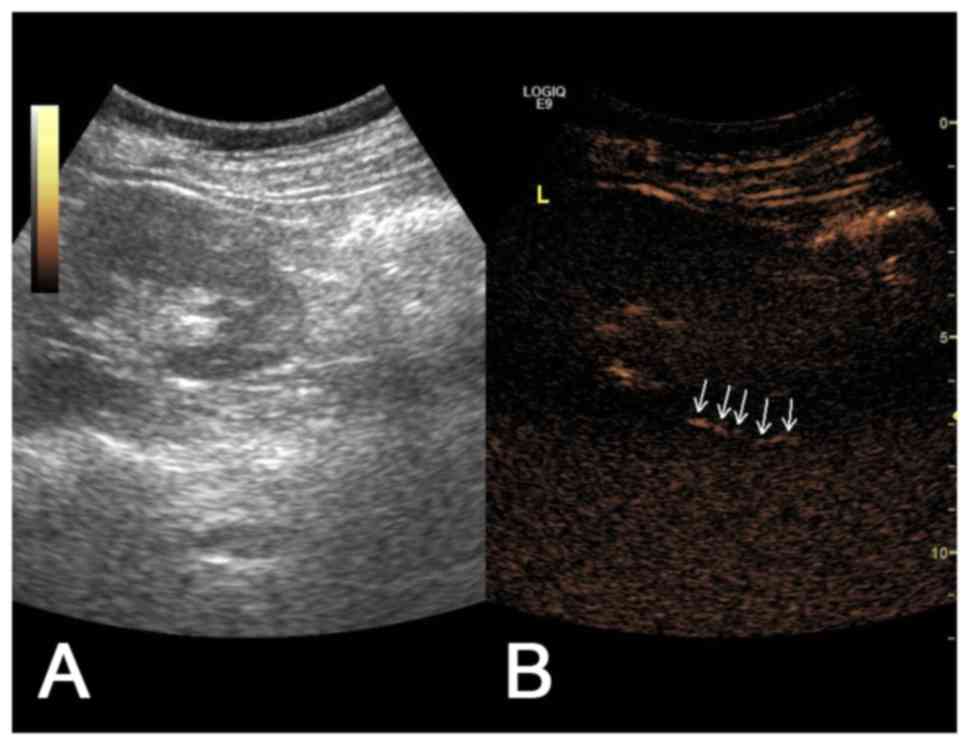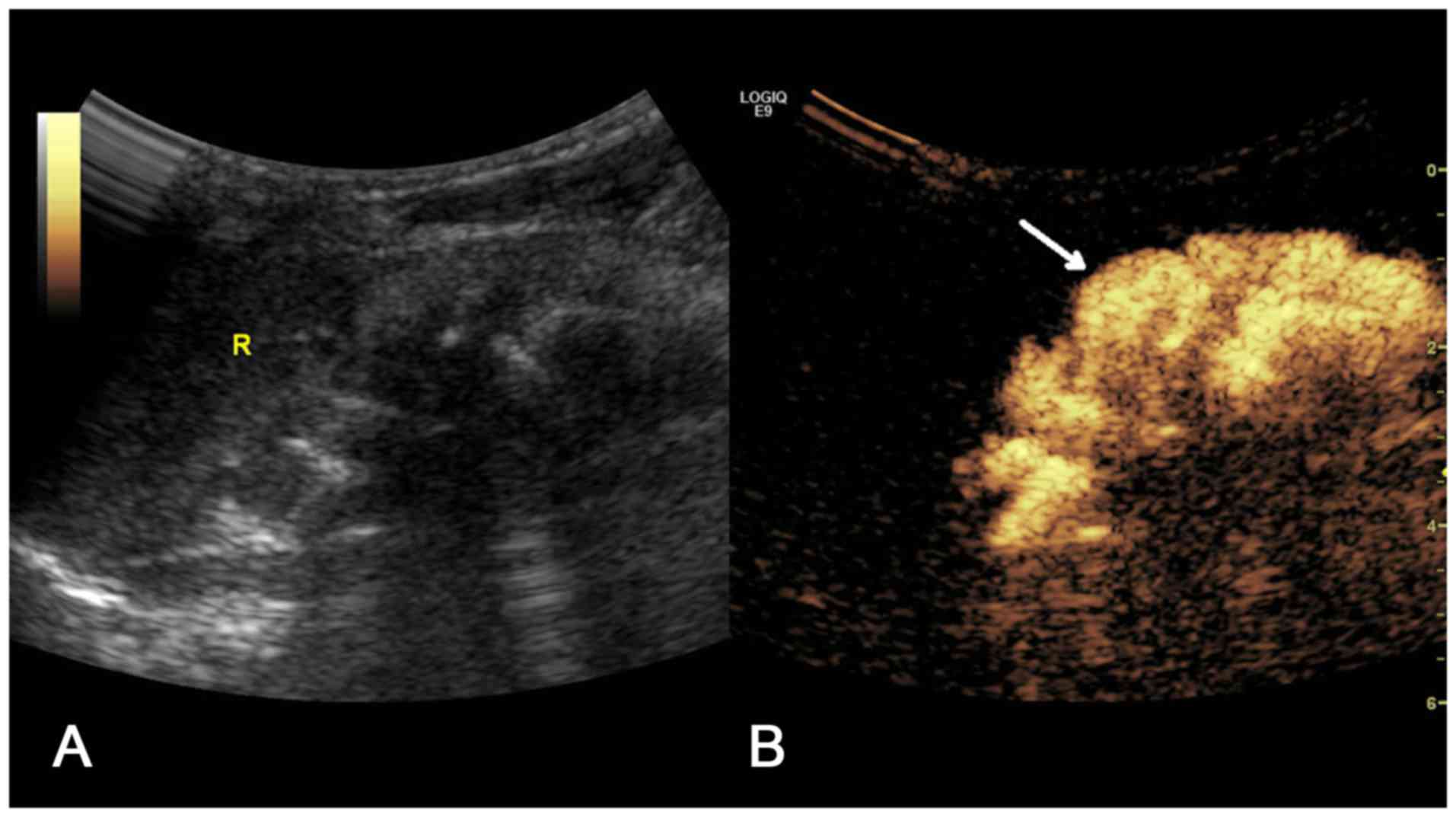|
1
|
Roić G, Roić AC, Palcić I, Grmoja T and
Batos AT: Contrast enhanced voiding urosonography (cevus) in the
diagnosis of vesicoureteral reflux. Lijecnicki Vjesnik. 138:39–46.
2016.(In Croatian). PubMed/NCBI
|
|
2
|
Coulthard MG: Vesicoureteric reflux is not
a benign condition. Pediatr Nephrol. 24:227–232. 2009. View Article : Google Scholar : PubMed/NCBI
|
|
3
|
Venhola M and Uhari M: Vesicoureteral
reflux, a benign condition. Pediatr Nephrol. 24:223–226. 2009.
View Article : Google Scholar : PubMed/NCBI
|
|
4
|
Subcommittee on Urinary Tract Infection:
Reaffirmation of AAP clinical practice guideline: The diagnosis and
management of the initial urinary tract infection in febrile
infants and young children 2–24 months of Age. Pediatrics. 138:pii:
e201630262016. View Article : Google Scholar
|
|
5
|
Kenda RB, Kenig A, Novljan G, Ponikvar R
and Ponikvar JB: Cyclic voiding urosonography for detecting
vesicoureteric reflux in renal transplant recipients. Nephrol Dial
Transplant. 16:2229–2231. 2001. View Article : Google Scholar : PubMed/NCBI
|
|
6
|
Lim R: Vesicoureteral reflux and urinary
tract infection: Evolving practices and current controversies in
pediatric imaging. AJR Am J Roentgenol. 192:1197–1208. 2009.
View Article : Google Scholar : PubMed/NCBI
|
|
7
|
Darge K: Voiding urosonography with US
contrast agent for the diagnosis of vesicoureteric reflux in
children: An update. Pediatr Radiol. 40:956–962. 2010. View Article : Google Scholar : PubMed/NCBI
|
|
8
|
Ji LN, Cao L, Chen DK, Cui YC, Zhang YL,
Ye H, Hao CS and Yuan XY: Evaluation of the clinical and imaging
examination in high-risk children with vesicoureteral reflux.
Zhonghua Er Ke Za Zhi. 49:282–286. 2011.(In Chinese). PubMed/NCBI
|
|
9
|
Kljucevsek D, Battelino N, Tomazic M and
Levart Kersnik T: A comparison of echo-enhanced voiding
urosonography with X-ray voiding cystourethrography in the first
year of life. Acta Paediatr. 101:e235–e239. 2012. View Article : Google Scholar : PubMed/NCBI
|
|
10
|
Wong LS, Tse KS, Fan TW, Kwok KY, Tsang
TK, Fung HS, Chan W, Lee KW, Leung MW, Chao NS, et al: Voiding
urosonography with second-generation ultrasound contrast versus
micturating cystourethrography in the diagnosis of vesicoureteric
reflux. Eur J Pediatr. 173:1095–1101. 2014. View Article : Google Scholar : PubMed/NCBI
|
|
11
|
Papadopoulou F, Anthopoulou A, Siomou E,
Fremidis S, Tsamboulas C and Darge K: Harmonic voiding
urosonography with a second-generation contrast agent for the
diagnosis of vesicoureteral reflux. Pediatr Radiol. 39:239–244.
2009. View Article : Google Scholar : PubMed/NCBI
|
|
12
|
Papadopoulou F, Anthopoulou A, Siomou E,
Efremidis S, Tsamboulas C and Darge K: Harmonic voiding
urosonography with a second-generation contrast agent for the
diagnosis of vesicoureteral reflux. Pediatr Radiol. 39:239–244.
2009. View Article : Google Scholar : PubMed/NCBI
|
|
13
|
Craig JC, Irwig LM, Knight JF and Roy LP:
Does treatment of vesicoureteric reflux in childhood prevent
end-stage renal disease attributable to reflux nephropathy?
Pediatrics. 105:1236–1241. 2000. View Article : Google Scholar : PubMed/NCBI
|
|
14
|
Marra G, Oppezzo C, Ardissino G, Daccò V,
Testa S, Avolio L, Taioli E and Sereni F; ItalKid Project, : Severe
vesicoureteral reflux and chronic renal failure: A condition
peculiar to male gender? Data from the ItalKid Project. J Pediatr.
144:677–681. 2004. View Article : Google Scholar : PubMed/NCBI
|
|
15
|
Jackson EC: Urinary tract infections in
children: Knowledge updates and a salute to the future. Pediatr
Rev. 36:153–166. 2015. View Article : Google Scholar : PubMed/NCBI
|
|
16
|
Pohl HG and Belman AB: The ‘top-down’
approach to the evaluation of children with febrile urinary tract
infection. Adv Urol. 2009:7834092009. View Article : Google Scholar
|
|
17
|
Giordano M, Marzolla R, Puteo F, Scianaro
L, Caringella DA and Depalo T: Voiding urosonography as first step
in the diagnosis of vesicoureteral reflux in children: A clinical
experience. Pediatr Radiol. 37:674–677. 2007. View Article : Google Scholar : PubMed/NCBI
|
|
18
|
Alshamsam L, Al Harbi A, Fakeeh K and Al
Banyan E: The value of renal ultrasound in children with a first
episode of urinary tract infection. Ann Saudi Med. 29:46–49. 2009.
View Article : Google Scholar : PubMed/NCBI
|
|
19
|
Papadopoulou F, Efremidis SC, Oiconomou A,
Badouraki M, Panteleli M, Papachristou F and Soteriou I: Cyclic
voiding cystourethrography: Is vesicoureteral reflux missed with
standard voiding cystourethrography? Eur Radiol. 12:666–670. 2002.
View Article : Google Scholar : PubMed/NCBI
|
|
20
|
Chand DH, Rhoades T, Poe SA, Kraus S and
Strife CF: Incidence and severity of vesicoureteral reflux in
children related to age, gender, race and diagnosis. J Urol.
170:1548–1550. 2003. View Article : Google Scholar : PubMed/NCBI
|
|
21
|
Darge K: Diagnosis of vesicoureteral
reflux with ultrasonography. Pediatr Nephrol. 17:52–60. 2002.
View Article : Google Scholar : PubMed/NCBI
|
|
22
|
Darge K, Zieger B, Rohrschneider W, Ghods
S, Wunsch R and Troeger J: Contrast-enhanced harmonic imaging for
the diagnosis of vesicoureteral reflux in pediatric patients. AJR
Am J Roentgenol. 177:1411–1415. 2001. View Article : Google Scholar : PubMed/NCBI
|
|
23
|
Carovac A, Zubovic SV, Carovac M and Pasic
IS: Significance of sonographically demonstrated ureteral
dilatation in evaluation of vesicoureteral reflux verified with
voiding urosonography in children with urinary tract infection.
Acta Inform Med. 23:268–272. 2015. View Article : Google Scholar : PubMed/NCBI
|
|
24
|
Papadopoulou F, Ntoulia A, Siomou E and
Darge K: Contrast-enhanced voiding urosonography with intravesical
administration of a second-generation ultrasound contrast agent for
diagnosis of vesicoureteral reflux: Prospective evaluation of
contrast safety in 1,010 children. Pediatr Radiol. 44:719–728.
2014. View Article : Google Scholar : PubMed/NCBI
|
|
25
|
Claudon M, Cosgrove D, Albrecht T, Bolondi
L, Bosio M, Calliada F, Correas JM, Darge K, Dietrich C, D'On
ofrio, et al: Guidelines and good clinical practice recommendations
for contrast enhanced ultrasound (CEUS)-update 2008. Ultrasound Med
Biol. 34:11–29. 2013.
|
|
26
|
Piscaglia F, Nolsøe C, Dietrich CF,
Cosgrove DO, Gilja OH, Nielsen Bachmann M, Albrecht T, Barozzi L,
Bertolotto M, Catalano O, et al: The EFSUMB Guidelines and
recommendations on the clinical practice of contrast enhanced
ultrasound (CEUS): Update 2011 on non-hepatic applications.
Ultraschall Med. 33:33–59. 2012. View Article : Google Scholar : PubMed/NCBI
|
|
27
|
Darge K, Moeller RT, Trusen A, Butter F,
Gordjani N and Riedmiller H: Diagnosis of vesicoureteric reflux
with low-dose contrast-enhanced harmonic ultrasound imaging.
Pediatr Radiol. 35:73–78. 2005. View Article : Google Scholar : PubMed/NCBI
|


















